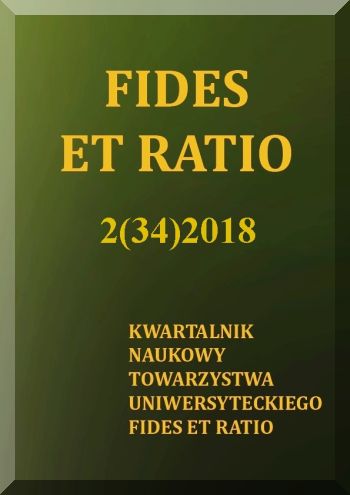Abstract
Adolescents are at the stage of life when they start to prefer and lead a particular and specific lifestyle. The choice of a lifestyle and leading it depend on the personal possibilities of an individual, as well as on the socio-cultural conditions in which they grow and function. This thesis presents the results of research on lifestyles adolescents prefer and lead living in various environments: rural and urban. The objective of the research was to compare the lifestyle preferred and led by adolescents living in rural and urban areas, including boys and girls, in order to demonstrate whether their place of residence and gender are related to the lifestyles they prefer and lead. The analysis of the conducted research allows to formulate the following conclusions: 1) youth living both in rural and urban environments marginalise such values as materialism, lofty ideas or social involvement, but they recognise the sense of family life and value stability and comfort in life; 2) when defining the desired lifestyle, youth from rural areas take into account family, independence and helping others more often, while youth from urban areas appreciate the value of self-development and aesthetic experiences more; 3) boys are more competitive and materialistic than girls, while girls appreciate the value of the family more than boys.
References
Błasiak D., (2000), Styl życia młodzieży licealnej na przykładzie II LO w Katowicach i I LO
w Siemianowicach Śląskich, Chowanna, 1, s. 121–134.
Czerwińska-Jasiewicz M., (2005), Koncepcje młodzieży na temat własnego życia – propozycja nowego modelu badań, Psychologia Rozwojowa, 10(4), s. 59–72.
Dubis M., (2014), Wartości i style życia młodzieży, Jagiellońskie Studia Socjologiczne, 1,
s. 35–45.
Fatyga B., (1999), Dzieci z naszej ulicy. Antropologia kultury młodzieżowej, Warszawa: Ośrodek Badań Młodzieży – Uniwersytet Warszawski.
Hipsz N., (2013), Wieś polska – postawy, styl życia, komunikat badań CBOS, Warszawa.
Matusewicz Cz., (1975), Psychologia wartości, Warszawa: PWN.
Mądrzycki T., (1996), Osobowość jako system tworzący i realizujący plany, Gdańsk: GWP.
Oleszkowicz A., Senejko A., (2011), Dorastanie, (w): Psychologia rozwoju człowieka. Podręcznik akademicki, J. Trempała (red.), (s. 259–286), Warszawa: PWN.
Ponczek D., Olszowy I., (2012), Styl życia młodzieży i jego wpływ na zdrowie, Prog Hig Epidemiol, 93(2), s. 260–268.
Siciński A., (1976), Styl życia – problemy pojęciowe i teoretyczne, (w): A. Siciński (red.), Styl życia. Koncepcje i propozycje, (s. 15–32), Warszawa: PWN.
Strzemińska A., Wiśnicka M., (2011), Młodzież na wsi, raport z badania przeprowadzonego prze Pracownię Badań i Innowacji „Stocznia” na zlecenie Polsko-Amerykańskiej Fundacji Wolności, Warszawa.
Tyszka A., (1971), Uczestnictwo w kulturze. O różnorodności stylów życia, Warszawa: PWN.
Wertenstein-Żuławski J., (1993), Młodzież polska – fenomen nieobecności, (w): J. Kośmider, A. Tyszkiewicz (red.), Dzieci swojego czasu. Młodzież polska i francuska, (s. 7–8), Warszawa: Wyd. Agencja Wulkan.
